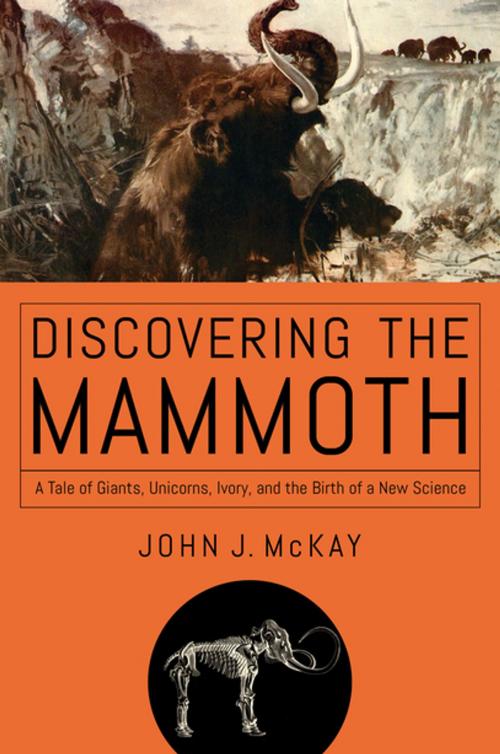Discovering the Mammoth: A Tale of Giants, Unicorns, Ivory, and the Birth of a New Science
Nonfiction, Science & Nature, Nature, Fossils, Animals, Dinosaurs, Science, Earth Sciences, Palaeontology| Author: | John J. McKay | ISBN: | 9781681774817 |
| Publisher: | Pegasus Books | Publication: | August 8, 2017 |
| Imprint: | Pegasus Books | Language: | English |
| Author: | John J. McKay |
| ISBN: | 9781681774817 |
| Publisher: | Pegasus Books |
| Publication: | August 8, 2017 |
| Imprint: | Pegasus Books |
| Language: | English |
The fascinating saga of solving the mystery of this ancient animal who once roamed the north country—and has captivated our collective imagination ever since.
Today, we know that a mammoth is an extinct type of elephant that was covered with long fur and lived in the north country during the ice ages. But how do you figure out what a mammoth is if you have no concept of extinction, ice ages, or fossils? Long after the last mammoth died and was no longer part of the human diet, it still played a role in human life. Cultures around the world interpreted the remains of mammoths through the lens of their own worldview and mythology.
When the ancient Greeks saw deposits of giant fossils, they knew they had discovered the battle fields where the gods had vanquished the Titans. When the Chinese discovered buried ivory, they knew they had found dragons’ teeth. But as the Age of Reason dawned, monsters and giants gave way to the scientific method. Yet the mystery of these mighty bones remained. How did Enlightenment thinkers overcome centuries of myth and misunderstanding to reconstruct an unknown animal?
The journey to unravel that puzzle begins in the 1690s with the arrival of new type of ivory on the European market bearing the exotic name "mammoth." It ends during the Napoleonic Wars with the first recovery of a frozen mammoth. The path to figuring out the mammoth was traveled by merchants, diplomats, missionaries, cranky doctors, collectors of natural wonders, Swedish POWs, Peter the Great, Ben Franklin, the inventor of hot chocolate, and even one pirate.
McKay brings together dozens of original documents and illustrations, some ignored for centuries, to show how this odd assortment of characters solved the mystery of the mammoth and, in doing so, created the science of paleontology.
The fascinating saga of solving the mystery of this ancient animal who once roamed the north country—and has captivated our collective imagination ever since.
Today, we know that a mammoth is an extinct type of elephant that was covered with long fur and lived in the north country during the ice ages. But how do you figure out what a mammoth is if you have no concept of extinction, ice ages, or fossils? Long after the last mammoth died and was no longer part of the human diet, it still played a role in human life. Cultures around the world interpreted the remains of mammoths through the lens of their own worldview and mythology.
When the ancient Greeks saw deposits of giant fossils, they knew they had discovered the battle fields where the gods had vanquished the Titans. When the Chinese discovered buried ivory, they knew they had found dragons’ teeth. But as the Age of Reason dawned, monsters and giants gave way to the scientific method. Yet the mystery of these mighty bones remained. How did Enlightenment thinkers overcome centuries of myth and misunderstanding to reconstruct an unknown animal?
The journey to unravel that puzzle begins in the 1690s with the arrival of new type of ivory on the European market bearing the exotic name "mammoth." It ends during the Napoleonic Wars with the first recovery of a frozen mammoth. The path to figuring out the mammoth was traveled by merchants, diplomats, missionaries, cranky doctors, collectors of natural wonders, Swedish POWs, Peter the Great, Ben Franklin, the inventor of hot chocolate, and even one pirate.
McKay brings together dozens of original documents and illustrations, some ignored for centuries, to show how this odd assortment of characters solved the mystery of the mammoth and, in doing so, created the science of paleontology.















